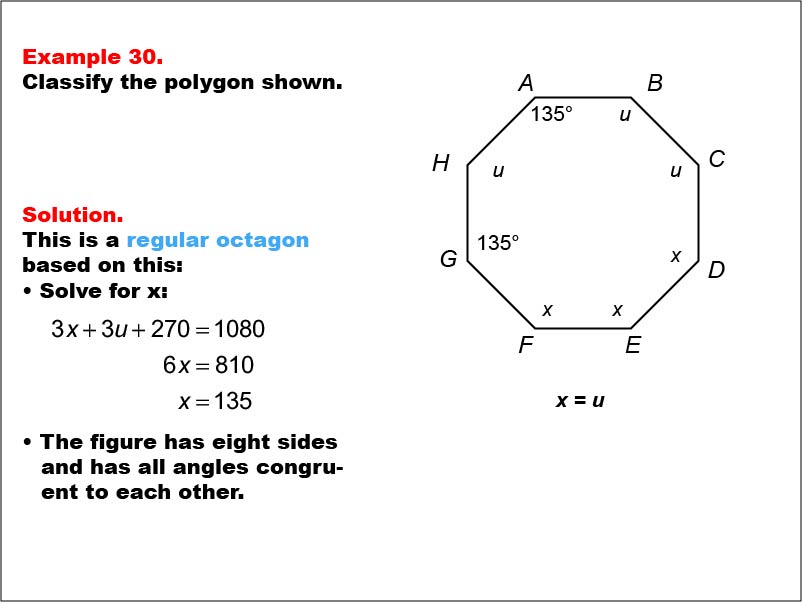
Display Title
Math Example--Polygons--Polygon Classification: Example 30
Display Title
Math Example--Polygons--Polygon Classification: Example 30

Topic
Polygons
Description
This example features an octagon with angles labeled as 135° and angles labeled as "u" and "x." It demonstrates how to determine if an octagon is regular by solving for the unknown angle measures and confirming equal side lengths.
Understanding polygon classification is essential in geometry as it helps students recognize and categorize shapes based on their properties. This collection of examples provides insights into how partial information about angle measures and side lengths can be used to determine the regularity of octagons.
Exposure to multiple worked-out examples is crucial for students to develop a thorough understanding of polygon classification. Each example presents a unique scenario, allowing students to apply problem-solving skills and reinforce their knowledge of regular polygon properties.
Teacher's Script: Let's analyze this octagon, class. We see some angles marked as 135 degrees and angles labeled with variables. How can we determine if all angles are equal? Let's work through the problem-solving steps together to classify this polygon and understand why it's considered regular. Remember the equation: 3x + 3u + 270 = 1080. How does solving this equation help us confirm the regularity of the octagon?
For a complete collection of math examples related to Polygons click on this link: Math Examples: Polygon Classification Collection.
| Common Core Standards | CCSS.MATH.CONTENT.5.G.B.3, CCSS.MATH.CONTENT.7.G.B.6 |
|---|---|
| Grade Range | 6 - 8 |
| Curriculum Nodes |
Geometry • Polygons • Definition of a Polygon |
| Copyright Year | 2013 |
| Keywords | polygons, classification |